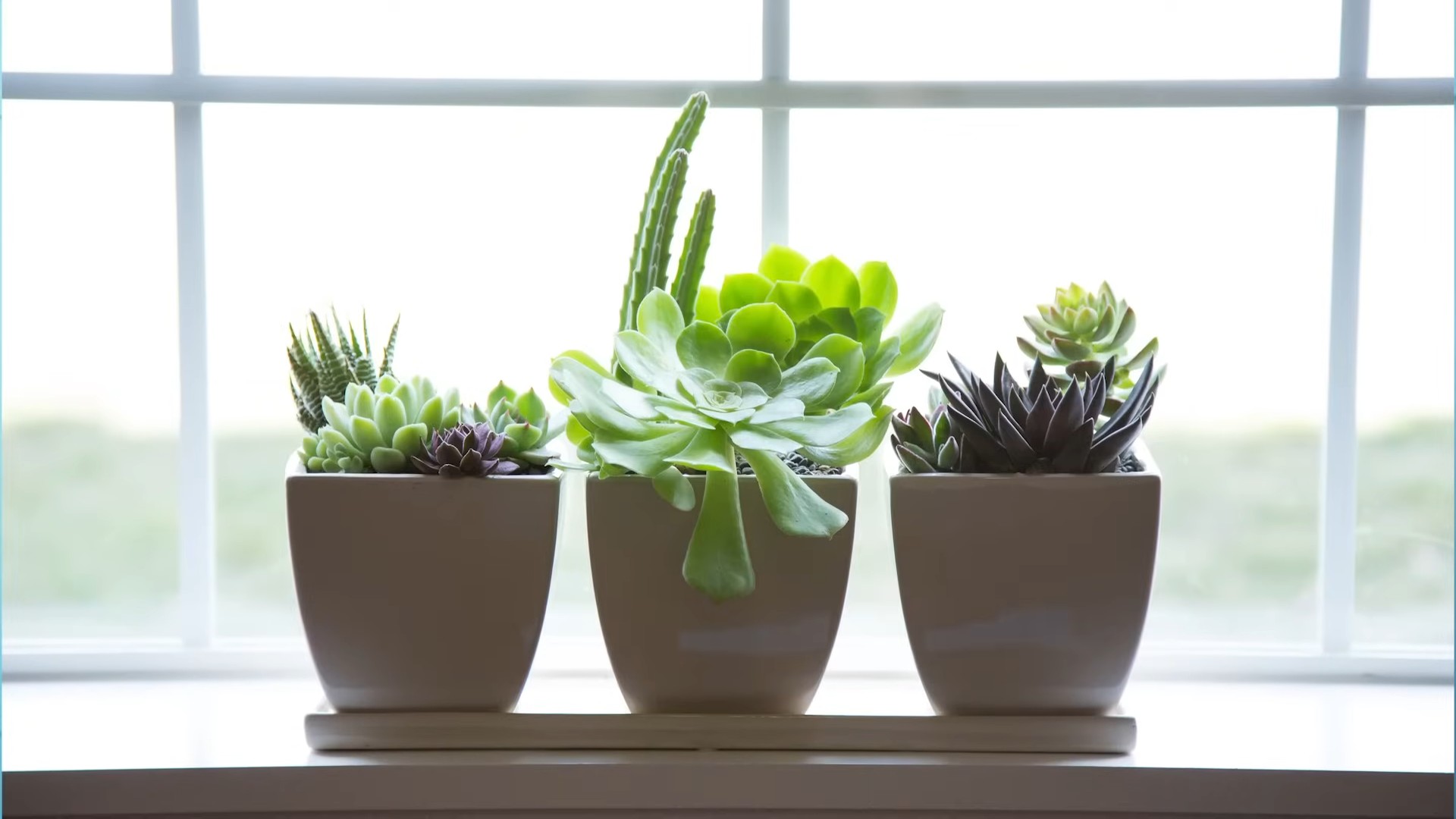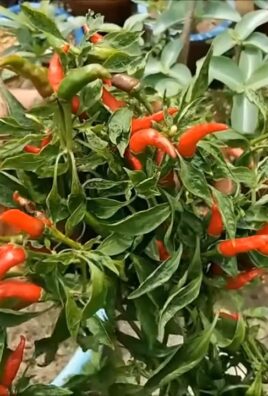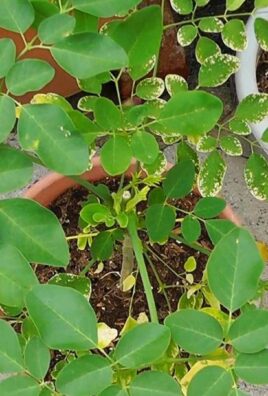Indoor Succulent Care Tips are your gateway to bringing the serene beauty of the desert right into your living room! Have you ever admired those perfectly arranged succulents in a magazine and wondered how to achieve the same effortless chic in your own home? Well, wonder no more! This isn’t just another gardening guide; it’s your personal roadmap to succulent success, filled with easy DIY tricks and hacks that even a complete beginner can master.
Succulents have a rich history, dating back to ancient civilizations where they were prized for their medicinal properties and resilience. In many cultures, they symbolize endurance and lasting love – qualities we all appreciate! But beyond their historical significance, succulents have surged in popularity in recent years, becoming a staple in modern home decor. Their unique shapes, vibrant colors, and low-maintenance nature make them the perfect plant companions for busy individuals and apartment dwellers alike.
Let’s face it, sometimes keeping these little guys alive can feel like a challenge. Overwatering, underwatering, not enough light – the pitfalls are numerous! That’s why I’m so excited to share these indoor succulent care tips with you. I’ll show you how to avoid common mistakes, create the perfect growing environment, and even propagate new succulents from existing ones. Get ready to transform your space into a thriving indoor oasis, one succulent at a time!

DIY: Thriving Indoor Succulents – A Beginner’s Guide
Hey plant lovers! I’m so excited to share my secrets for keeping succulents happy and healthy indoors. Succulents are fantastic because they’re relatively low-maintenance, but they still need the right conditions to really flourish. I’ve learned a lot through trial and error, and I’m here to guide you through everything you need to know. Let’s get started!
Understanding Succulent Needs
Before we dive into the nitty-gritty, let’s quickly cover the basics of what succulents need to thrive indoors. Think of it as their little wish list!
* Light: Succulents crave bright, indirect light.
* Water: Less is more! Overwatering is the quickest way to kill a succulent.
* Soil: Well-draining soil is crucial to prevent root rot.
* Pot: A pot with drainage holes is a must-have.
* Air Circulation: Good airflow helps prevent moisture buildup.
Choosing the Right Succulents
Not all succulents are created equal, especially when it comes to indoor growing. Some varieties are more tolerant of lower light conditions than others. Here are a few of my favorites that do well indoors:
* Echeveria: These rosette-shaped succulents come in a variety of colors and are relatively easy to care for.
* Haworthia: These small, slow-growing succulents are perfect for small spaces and tolerate lower light levels.
* Aloe Vera: Not only is aloe vera easy to care for, but it also has medicinal properties!
* Sedum (Burro’s Tail): This trailing succulent looks beautiful in hanging baskets or cascading over the edge of a pot.
* Crassula (Jade Plant): Jade plants are known for their longevity and are considered symbols of good luck.
Step-by-Step Guide to Planting Succulents
Okay, let’s get our hands dirty! This section will walk you through the process of planting your succulents in their new homes.
1. Gather Your Supplies: You’ll need:
* Succulents of your choice
* A pot with drainage holes
* Succulent potting mix (or a mix of regular potting soil and perlite/sand)
* Small pebbles or gravel (optional, for drainage layer)
* Gloves (optional, but recommended)
* Watering can or spray bottle
2. Prepare the Pot: If your pot has large drainage holes, you might want to cover them with a piece of mesh or a coffee filter to prevent soil from washing out. I like to add a layer of small pebbles or gravel at the bottom of the pot to improve drainage, but this is optional.
3. Add Soil: Fill the pot about two-thirds full with succulent potting mix. Make a small well in the center of the soil.
4. Remove the Succulent from its Nursery Pot: Gently squeeze the sides of the nursery pot to loosen the soil. Carefully remove the succulent, being careful not to damage the roots. If the roots are tightly bound, gently tease them apart with your fingers.
5. Plant the Succulent: Place the succulent in the well you created in the soil. Make sure the top of the root ball is level with the top of the soil.
6. Fill in with Soil: Add more soil around the succulent, gently pressing it down to secure the plant.
7. Water Sparingly: Water the succulent lightly, just enough to moisten the soil. Avoid getting water on the leaves, as this can lead to rot.
8. Add a Top Dressing (Optional): I like to add a layer of decorative gravel or pebbles on top of the soil. This helps to prevent soil erosion and adds a nice aesthetic touch.
Watering Like a Pro
Watering is arguably the most important aspect of succulent care. Overwatering is a surefire way to kill your succulents, so it’s crucial to get it right.
1. The “Soak and Dry” Method: This is my go-to watering method for succulents. Water thoroughly until water drains out of the drainage holes. Then, wait until the soil is completely dry before watering again.
2. How to Tell When to Water: The best way to tell if your succulent needs water is to check the soil. Stick your finger about an inch into the soil. If it feels dry, it’s time to water. You can also look for signs of underwatering, such as shriveled or wrinkled leaves.
3. Watering Frequency: Watering frequency will vary depending on the type of succulent, the size of the pot, the climate, and the time of year. In general, you’ll need to water more frequently during the growing season (spring and summer) and less frequently during the dormant season (fall and winter). I usually water my succulents every 2-4 weeks in the winter and every 1-2 weeks in the summer.
4. Avoid Overwatering: I can’t stress this enough! Overwatering is the biggest killer of succulents. If you’re unsure whether to water, it’s always better to err on the side of caution and wait a few more days. Signs of overwatering include yellowing or mushy leaves, and a soft, squishy stem.
5. Bottom Watering (Optional): Some people prefer to bottom water their succulents. To do this, place the pot in a shallow dish of water and let the soil absorb the water from the bottom up. Remove the pot from the dish once the top of the soil is moist.
Providing the Right Light
Succulents need plenty of light to thrive, but direct sunlight can scorch their leaves, especially indoors.
1. Bright, Indirect Light: The ideal location for succulents is a spot that receives bright, indirect light. This means placing them near a window that gets plenty of sunlight, but shielding them from the harsh midday sun.
2. East-Facing Windows: East-facing windows are generally a good choice, as they provide gentle morning sun.
3. South-Facing Windows: South-facing windows can provide too much direct sunlight, especially during the summer months. If you place your succulents near a south-facing window, be sure to provide some shade during the hottest part of the day.
4. West-Facing Windows: West-facing windows can also provide too much direct sunlight, especially in the afternoon.
5. Signs of Insufficient Light: If your succulents aren’t getting enough light, they may become etiolated, which means they’ll stretch out and become leggy as they reach for the light. The leaves may also lose their vibrant color and become pale green.
6. Artificial Light: If you don’t have enough natural light, you can supplement with artificial light. Use a grow light specifically designed for plants. Position the light about 6-12 inches above the succulents and leave it on for 12-14 hours per day.
Choosing the Right Soil
Succulents need well-draining soil to prevent root rot. Regular potting soil is often too dense and retains too much moisture.
1. Succulent Potting Mix: The best option is to use a succulent potting mix, which is specifically formulated for succulents and cacti. These mixes typically contain a blend of ingredients like perlite, sand, and peat moss, which provide excellent drainage.
2. DIY Succulent Mix: If you can’t find succulent potting mix, you can make your own by mixing regular potting soil with perlite or coarse sand. A good ratio is 1 part potting soil to 1 part perlite or sand.
3. Avoid Moisture-Retaining Ingredients: Avoid using potting mixes that contain a lot of moisture-retaining ingredients, such as vermiculite or peat moss.
Choosing the Right Pot
The pot you choose for your succulents is just as important as the soil.
1. Drainage Holes: The most important thing is to choose a pot with drainage holes. Drainage holes allow excess water to escape, preventing root rot.
2. Terracotta Pots: Terracotta pots are a great choice for succulents because they’re porous and allow the soil to dry out quickly.
3. Plastic Pots: Plastic pots are also a good option, but they don’t dry out as quickly as terracotta pots.
4. Size: Choose a pot that’s slightly larger than the root ball of the succulent. Avoid using pots that are too large, as this can lead to overwatering.
5. Material: Consider the material of the pot. Terracotta is breathable, which helps with drainage. Glazed ceramic and plastic retain more moisture.
Fertilizing Your Succulents
Succulents don’t need a lot of fertilizer, but a light feeding during the growing season can help them thrive.
1. Use a Balanced Fertilizer: Use a balanced fertilizer with an NPK ratio of 10-10-10 or 5-10-5.

Conclusion
So, there you have it! Mastering indoor succulent care doesn’t have to be a daunting task. By implementing these simple yet effective DIY tricks, you can transform your home into a thriving oasis of beautiful, healthy succulents. We’ve covered everything from creating the perfect well-draining soil mix to crafting your own humidity trays, and even explored the art of propagating new succulents from existing leaves.
Why is this a must-try? Because healthy succulents are more than just decorative plants; they’re living art that brings joy and tranquility to your space. They purify the air, add a touch of nature to your indoor environment, and, let’s be honest, they’re incredibly Instagrammable! Plus, by taking control of their care, you’ll develop a deeper connection with these fascinating plants and a greater appreciation for the natural world.
But don’t stop there! Feel free to experiment with these techniques and adapt them to your specific environment and the unique needs of your succulents. For example, if you live in a particularly humid climate, you might want to skip the humidity tray altogether and focus on ensuring excellent air circulation. Or, if you’re feeling adventurous, try creating your own custom succulent soil mix by adding different ratios of perlite, pumice, and coconut coir. You could even try using terracotta pots with drainage holes for even better aeration.
Another variation to consider is the type of water you use. While tap water is generally fine, some succulents are sensitive to the minerals and chemicals it contains. If you notice your succulents developing brown tips or other signs of distress, try switching to filtered water or rainwater.
And when it comes to propagation, the possibilities are endless! Experiment with different types of succulent leaves and stems, and try different propagation methods, such as water propagation or soil propagation. You might be surprised at how easily you can create new succulents from just a few cuttings.
Ultimately, the key to successful indoor succulent care is observation and adaptation. Pay close attention to your plants, learn to recognize the signs of stress, and adjust your care routine accordingly. With a little bit of knowledge and a lot of love, you can create a thriving succulent collection that will bring you joy for years to come.
We encourage you to try these DIY tricks and see the difference they make in the health and vitality of your succulents. Don’t be afraid to experiment, make mistakes, and learn from your experiences. And most importantly, don’t forget to share your results with us! We’d love to hear about your successes, your challenges, and any other tips or tricks you’ve discovered along the way. Share your photos and stories on social media using #IndoorSucculentCareDIY and let’s create a community of thriving succulent enthusiasts! Let’s all become experts in indoor succulent care together!
Frequently Asked Questions (FAQ)
What kind of soil is best for indoor succulents?
The most crucial aspect of succulent soil is excellent drainage. Succulents are prone to root rot if they sit in soggy soil. A good starting point is a mix of equal parts potting soil, perlite, and coarse sand. You can also purchase pre-made succulent and cactus mixes, which are specifically formulated for these types of plants. Avoid using regular garden soil, as it tends to retain too much moisture. Consider adding pumice for even better drainage and aeration. The ideal pH level for succulent soil is slightly acidic to neutral, around 6.0 to 7.0.
How often should I water my indoor succulents?
Watering frequency depends on several factors, including the type of succulent, the size of the pot, the type of soil, and the environmental conditions. A general rule of thumb is to water thoroughly when the soil is completely dry to the touch. This is often referred to as the “soak and dry” method. During the active growing season (spring and summer), you may need to water more frequently than during the dormant season (fall and winter). Overwatering is a common mistake, so it’s always better to err on the side of underwatering. Check the soil moisture regularly by sticking your finger into the soil. If it feels dry an inch or two down, it’s time to water.
How much sunlight do indoor succulents need?
Most succulents need at least six hours of bright, indirect sunlight per day. South-facing windows are ideal, but east- or west-facing windows can also work. If your succulents aren’t getting enough sunlight, they may become etiolated, meaning they stretch out and become leggy in search of light. If you don’t have enough natural light, you can supplement with grow lights. Place the grow lights a few inches above the plants and keep them on for 12-14 hours per day. Rotate your succulents regularly to ensure that all sides get equal exposure to light.
How do I propagate succulents from leaves?
Leaf propagation is a relatively easy way to create new succulents. Start by gently twisting or cutting a healthy leaf from the mother plant. Allow the cut end of the leaf to callous over for a few days. This helps prevent rot. Once the leaf has calloused, place it on top of well-draining soil or a propagation tray. You can also mist the leaf lightly with water every few days. Eventually, the leaf will start to sprout roots and a tiny new plant. Once the new plant has established itself, you can gently transplant it into its own pot.
What are some common signs of succulent problems?
Several signs can indicate that your succulents are experiencing problems. Yellowing or mushy leaves often indicate overwatering. Brown or crispy leaves can indicate underwatering or sunburn. Leggy growth can indicate insufficient light. White, cottony spots on the leaves or stems can indicate a mealybug infestation. If you notice any of these signs, take action immediately to address the underlying problem.
Can I use regular fertilizer for my succulents?
While succulents don’t require a lot of fertilizer, they can benefit from occasional feeding during the growing season. Use a balanced, water-soluble fertilizer diluted to half strength. Avoid fertilizers that are high in nitrogen, as this can lead to weak, leggy growth. Fertilize your succulents every few weeks during the spring and summer months. Do not fertilize during the dormant season (fall and winter).
How do I prevent pests from attacking my succulents?
Prevention is key when it comes to pests. Regularly inspect your succulents for signs of infestation. Keep your plants clean and free of debris. Ensure good air circulation to prevent fungal diseases. If you do find pests, you can try treating them with insecticidal soap or neem oil. Isolate infested plants to prevent the spread of pests to other succulents.
What is the ideal temperature for indoor succulents?
Most succulents prefer temperatures between 65°F and 80°F (18°C and 27°C). They can tolerate slightly cooler temperatures, but they should not be exposed to freezing temperatures. Avoid placing your succulents near drafts or heating vents, as this can cause them to dry out.
How do I make a DIY humidity tray for my succulents?
A humidity tray can help increase the humidity around your succulents, especially during dry winter months. To make a DIY humidity tray, simply fill a shallow tray with pebbles or gravel. Add water to the tray, making sure the water level is below the top of the pebbles. Place your succulents on top of the pebbles. As the water evaporates, it will increase the humidity around the plants.
What are some easy-to-care-for succulent varieties for beginners?
Some excellent choices for beginner succulent growers include Echeveria, Sedum, Haworthia, and Aloe. These varieties are relatively low-maintenance and can tolerate a wide range of conditions. Do some research on specific varieties to ensure they are a good fit for your environment and care style. Remember that even easy-care succulents require proper drainage, adequate sunlight, and infrequent watering.





Leave a Comment